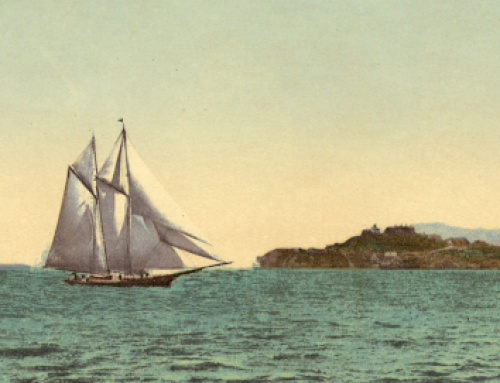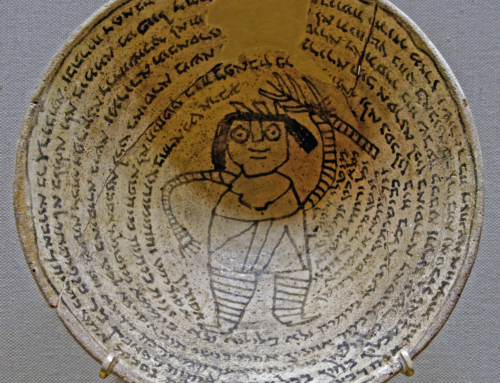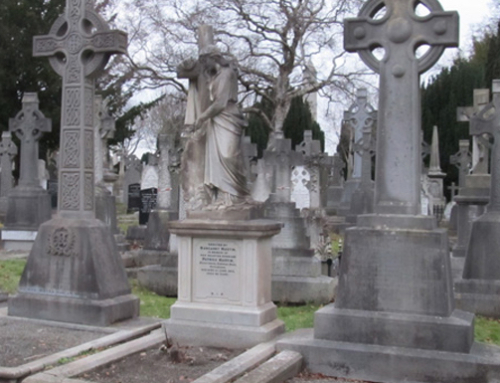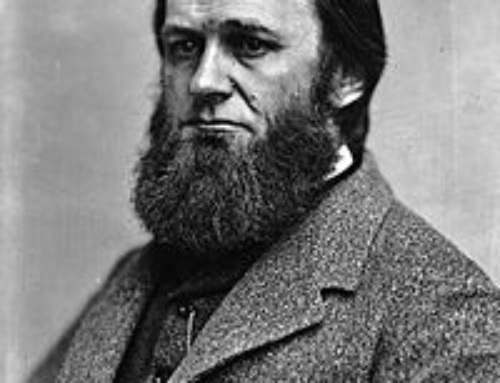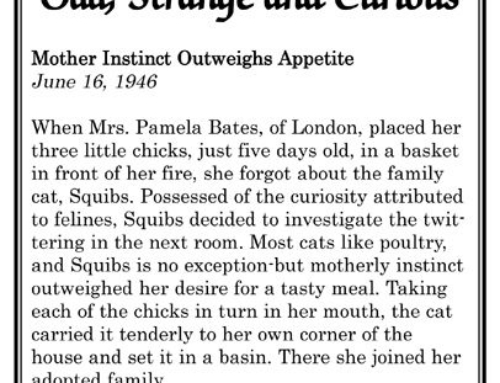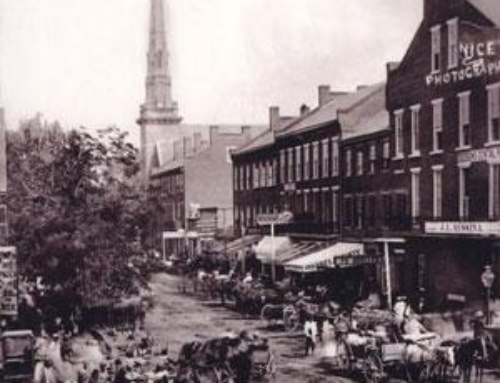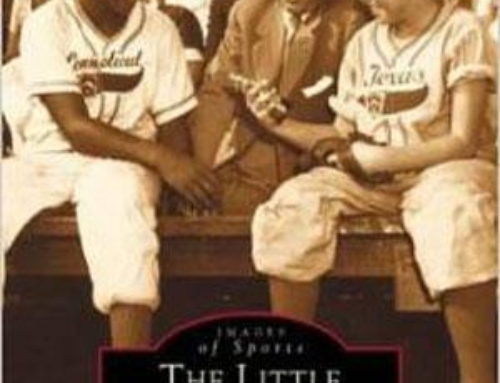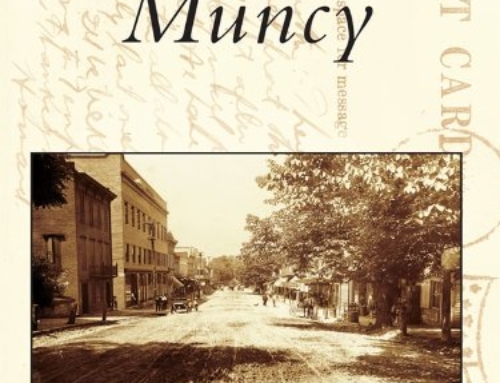Americans recall the Grit Sunday newspaper with nostalgia. For more than 100 years, this popular weekly delivered news, features, fiction, coupons, and comics to families across the nation. One million children have sold it, some for a few weeks, and some for several years.
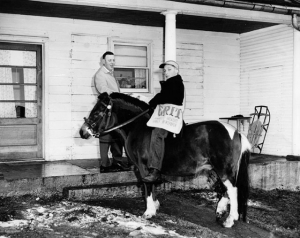
A newsboy delivers Grit newspapers in rural Pennsylvania.
Many look back with pride on the experience when, as young entrepreneurs, they knocked on the doors of small-town homes and were welcomed with a smile and a dime for a weekly edition of homespun good news.
In addition to the national Sunday edition, The Grit of Williamsport, Pennsylvania, also recorded local timely events and celebrated family and community through good times and bad. Many of its stories and photographs are endearing and touching portraits that have chronicled the region’s progress and misfortune.
The newspaper began as a Saturday supplement of Williamsport’s Daily Sun and Banner, published in 1882. It was a short-lived venture and, in 1884, Dietrick Lamade bought the enterprise. Lamade, a German immigrant and self-made man, then turned Grit into one of the miracles of modern publishing.

Dietrick Lamade, Grit publisher
Lamade was born Feb. 6, 1859, in Goelshausen, Germany, one of nine children of Johannes Dietrick and Caroline Stuepfle Lamade. His family moved to Williamsport in 1867 and, on Jan. 1, 1869, Johannes Lamade died from typhoid fever. At the age of ten, Dietrick Lamade, along with his older brothers and sister, quit school to support the family. He worked as an errand boy for several years before joining the offices of “Beobachter,” a local German-language publication.
At the age of eighteen, Lamade ventured into publishing. During the holiday season of 1877, he produced several issues of The Merchants’ Free Press, a four-page advertising pamphlet. Later, he published a theater program, and, in the summer of 1880 while the Pennsylvania National Guard bivouacked in Williamsport, he published a small paper called the Camp News.
In 1882, Lamade went to work for the Daily Sun and Banner as its advertising compositor and assistant composing room foreman. There, he typeset the first head for Grit. Two years later, he left the Sun and Banner to help revive The Times, a weekly publication that was scheduled to become a daily. Its owner, however, lacked the money to carry out this plan and the paper folded.
Lamade lost his job. At the age of 25, he now had a wife and two children to support. He later said that he knew this would be the opportunity of his life. He persuaded two men to invest in his idea and then bought the Grit name from the Sun and Banner to use for his new publication. He also bought the equipment from the Times.
The first year of publication was one of adversity and uncertainty. Grit owed more than it was worth and seven business partners came and went. Despite these hardships, Lamade did not lose faith. He knew that he had to improve circulation (then about 4,000) if the paper were to survive. Lamade decided to interest new subscribers with contests and drawings. He printed coupons in his newspaper offering readers chances to win such prizes as a piano, a gold watch, a marble-topped bedroom suite, a rifle, and a silk dress. His partners thought his ideas were impractical and costly; one threw up his hands in horror at the idea of more debts and announced that he was through with the enterprise.
Lamade’s motto was, “Difficulties show what men are.” Undeterred, he enlisted his younger brother as a new partner.
Lamade traveled throughout Northcentral Pennsylvania using a lottery to stimulate the statewide circulation of the Grit. He convinced many small store owners and newsagents to carry the publication. He tacked flyers to buildings, fences, and trees, and hired boys to deliver circulars to all the homes in the region. After his week on the road, he returned to the paper’s office and slept on a folding cot to ensure that his publication is shipped to out-of-town agents on Saturday mornings and that the Williamsport edition was ready for Sunday morning deliveries. Lamade’s tireless efforts more than doubled circulation and helped to stabilize the Grit’s finances. His dedication saved the newspaper.
In 1886, Grit boasted a weekly circulation of 14,000, and all of its bills were paid in cash. With a $400 surplus, Lamade and his partners shook hands, patted themselves on their backs and gave themselves raises from $12 to $15 a week. They bought new equipment and moved to a better office. By 1887, circulation had reached 20,000 and the partners ordered their first newspaper perfecting press at a price tag of $8,000.
In 1891, Grit and its 40 employees moved again into a new building at the corner of Williams and West Third streets. Circulation averaged 53,000 copies weekly in most states east of the Mississippi. Lamade began using direct mail and hired newsboys throughout the country to sell the paper. By the start of the 20th century, circulation reached 100,000 then tripled by 1916. By the late 1970s, its circulation was more than 1.2 million.
Lamade never intended to print negative news or compete with metropolitan dailies or national magazines. He wanted only to serve small towns and villages removed from the influences of big cities, populations with no daily newspaper. “If I have succeeded,” Lamade once said, “it is because I have concentrated on one thing.” He read his newspaper each week with a critical eye and always encouraged optimism. “Make every issue of ‘Grit’ ring the joy-bells of life,” was his sage advice.
Grit was one of the first newspapers in America to feature color photographs and artwork, and fictional supplements. Although its 5-cent price tag eventually increased to 25 cents because of higher taxes, wages, and materials, the newspaper never changed its 80-20 percent ratio of editorial matter to advertising content.
Williamsport: Birthplace of ‘Grit’

Grit employees
Williamsport is a small mountainous town in Northcentral Pennsylvania, situated on the West Branch of the Susquehanna River. Renowned in the 19th century for its timber products, many lumbermen became millionaires after harvesting virgin forests of hemlock and white pine. Its legacy is Millionaires’ Row, Victorian-era mansions that line the city’s old residential neighborhood.
A former indentured servant, Michael Ross founded Williamsport, naming the river city after his son. Born July 12, 1759, of Scottish origin, He and his mother were indentured to Muncy land speculator Samuel Wallis. A surveyor’s assistant, at the conclusion of his servitude in 1779, Ross received 109 acres of land from an appreciative Wallis. He added 285 acres of land to his holdings and soon, he owned plots on both sides of the West Branch of the Susquehanna River.
In 1795, Ross hired surveyors William Ellis and Joseph Williams to lay out the town of Williamsport. According to historian John F. Meginness (“History of Lycoming County, Pennsylvania,” 1892), the original plot was a rectangular figure containing 111 acres and divided into 302 lots. Streets and alleys crossed each other at right angles and a public square, according to English custom, occupied the center of town. The first sale of lots, which took place on July 4, 1796, was a festive event with the public enjoying an ox roast. The first house in Williamsport was a log structure erected by James Russell on March 1796. It stood on the corner of Third and Mulberry streets and also served as the first tavern and the first courthouse. Williamsport was incorporated as a borough in 1806 and as a city in 1866.
Lumber barons provided more than one and one-half million logs annually. Inevitably, zealous timbering denuded the mountainsides. A disastrous flood in 1894 toppled the remaining lumbering companies.
Its heyday over, some residents turned to agriculture. A great deal more, however, was obliged to move from the area to seek employment. Business and industry were at a standstill. Hoping to avert financial collapse, local executives formed a trade association to attract new companies and revitalize the region. The effort worked and during the years following World War II, Williamsport once again boomed, this time with manufacturing companies. Throughout it all, Grit photographer D. Vincent Smith was a familiar sight lugging his box camera on the back of his heavy-duty bicycle. He left behind a priceless photographic heritage.
Lamade’s World Tour
In January 1922, Lamade embarked on a 230-day world tour, leaving his publishing empire in the hands of his family and trusted employees. His jaunt would take him to exotic locales, including France, Tunis, Italy, Egypt, Palestine, Ceylon, India, Burma, the Malay states, the Philippine Islands, China, Manchuria, Korea, and Japan before returning home in May 1922. He left the United States by way of New York and returning to San Francisco. Lamade estimated the group traveled more than 38,000 miles–20,000 by water, 14,000 by rail, 4,000 by automobile, and a few by carriage, rickshaw, sedan chair, elephant, donkey and on foot.
In his early 60s and anticipating retirement, Lamade still wanted to entertain, educate (and influence) his one million readers. For years, he relied upon correspondents to report world news, but who could inform small-town America better than the man who had built Grit into their favorite newspaper? While abroad for seven months, Lamade wrote about his travels. Upon his return, he compiled his features into a leather-bound, keepsake book, “Around the World,” which he gave to family and friends.
Lamade’s traveling party consisted of eight men, two women, and an “experienced tour manager.” He engaged the services of Thomas Cook and Son, one of the longest-serving and the internationally best-known names in travel. Lamade appreciated the company’s service and his tour manager’s attention “to all the bothersome details of travel.”
He writes, “The minutest details of our long trip have been attended to in advance. We travel on a schedule, with a definite program assigned each day. Reservations are made many weeks in advance on steamships, and railroads, and at hotels in order that there may be no lack of first-class accommodations.”
However, his travelogues are a reflection of Lamade’s prejudices and vision of imperialism. His journey began in North Africa and his headlines proclaimed North Africa as a “Garden Spot” where the “French Control Lazy Arabs.” Another headline lauds a century of French occupancy because it had “…Worked Wonders in Algiers and Tunis, Despite Filth and Laziness of Native Arab Population.”
“Viewing this terrible havoc in the wake of the war, the mind involuntarily attempts to picture the scenes which were enacted here just a few years ago–the clash of armed forces, bursting shells, whining bullets, death-dealing bombs, the charge and counter-charge, the once fair field carpeted with the distorted bodies of the dead, the pitiful cries of the wounded,” Lamade writes. “Here is where heroes fought and died, where history was written in blood, where democracy triumphed over autocracy. But, ho, the awfulness of it all, the needless sacrifice to settle something which could just as well have been adjudicated around the council boards of the nations.” (Jan. 8, 1922).
Lamade not only misinformed the American heartland about the “crowded, dirty, aimless condition” of the Arab culture of the Middle East but also about its history.
“This northern part of Africa once possessed a very high degree of civilization,” he writes. “But the whites fell to fighting amongst themselves about the time of the beginning of the Christian era, and the result was that the Moors and the Arabs eventually drove out the contending factions and possessed themselves of the land. Now, however, the white man is coming into his own again. The French, during their century of occupancy on this southern shore of the Mediterranean, have made marvelous strides in the rehabilitation of this fertile land, and the prediction is freely made that it eventually will become one of the garden spots of the world,” he writes. (Jan. 8, 1922).
These opinions, now a cause to shudder, matched those of many Anglo-Saxon nationalists. They echo Senator Albert Beveridge’s call in 1900 for U.S. expansion into, and permanent occupation of, the Philippines.
“God has not been preparing the English-speaking and Teutonic peoples for a thousand years for nothing by vain and idle self-contemplation and self-admiration. No! He has made us the master organizers of the world to establish a system where chaos reigns. … He has marked the American people as His chosen nation to finally lead in the regeneration of the world. This is the divine mission of America, and it holds for us all the profit, all the glory, all the happiness possible to man. We are trustees of the world’s progress, guardians of its righteous peace. The judgment of the Master is upon us: ‘Ye have been faithful over a few things; I will make you ruler over many things.'” (Congressional Record, 56th Cong., 1st Sess., 704-712).
Lamade also advocated genocide to facilitate the transformation of Algiers into a “garden spot” for white tourists.
“The magnificent climatic and other natural conditions to be found here make this very possible, and it only remains for the French to re-establish supremacy of the white man in all lines of work, and to bring the indolent, dirty, treacherous natives to a higher state of civilization or exterminate them entirely by the natural process of the survival of the fittest.” (Jan. 8, 1922).
Soon, Lamade began to despair and after months of traveling, he wanted to go home.
“We saw these brown peoples, whole nations of them, merely existing, living on from day to day without ambition or hope, lacking anything that could even by courtesy be called direction or leadership, working from sunrise to sunset merely to keep themselves alive in the hopeless struggle with the world. They seemed to be born in helplessness, live in ignorance, and die in superstition.
It was with the memory of these scenes and these experiences that we boarded ship at Yokohama, and right happy we were to get away from them. We had seen enough of the brown and yellow races. We longed for white men and civilization again.” (July 16, 1922).
While in the Philippines, however, Lamade met a naval chaplain who shared his nationalistic philosophy. The chaplain told Lamade, “The white race must stand together. Let us put our missionary work into our own white boys, build them up and make our own race strong … We have need of it to keep our proper place in the world.” (July 16, 1922).
The chaplain’s views reflect those of Naval Captain Alfred Thayer Mahan, a Christian expansionist. These views also echoed Josiah Strong’s, a social gospel leader with many writings on Anglo-Saxon predominance.
According to historian William H. Berge of Eastern Kentucky University, “One of the most important aspects of Strong’s best-known book, ‘Our Country,’ was that he recognized the destiny of the United States on the North American continent. To this, he added a doctrine of world mission, which he closely intertwined with a theory of race supremacy. Here was a voice with an audience, which could be of great service to the movement headed by Mahan and (Theodore) Roosevelt.”
It is difficult to categorize Lamade.
Was he another turn-of-the-century imperialist who supported the concept of Manifest Destiny, advocated white supremacy and adopted Herbert Spencer’s philosophy of Social Darwinism as a rationale for eliminating the weak?
On the other hand, was he a hero out of a Horatio Alger novel? Did his boyhood struggles and success as an adult epitomize the great American dream? Once a young, poor immigrant, his rise from rags to respectability doubtless inspired his readers.
His apologist podium just happened to be Grit, the most trusted newspaper in the nation.
The ‘Grit’ Continues
The little newspaper that could, Grit gained its popularity by appealing to small-town Americans. Nurtured by Dietrick Lamade, the newspaper grew from a circulation of 1,500 to more than 1.2 million and it remained under the management of the Lamade family for most of its run.
Lamade died on October 9, 1938, at the age of 79, a beloved figure mourned by many, and his descendants remain prominent today in Williamsport. His son George R. Lamade, then general manager of Grit, became its president. Another son, Howard J. Lamade, served as vice president and secretary. Four grandsons also were in the business. Grit became a tabloid January 2, 1944, and color made its first appearance in the Family Section on July 21, 1963.
Production costs spiraled, circulation dwindled, and, in 1990, the Lamade family sold Grit to Stauffer Communications of Kansas. The publication’s format changed to become a monthly magazine. Morris Publishing purchased it in 1994, and in 1996, it became a holding of Ogden Publications Incorporated, the parent company of the Williamsport Sun-Gazette.
Grit now is a nationally distributed monthly tabloid publication with a circulation of approximately 100,000. It continues to appeal to its largely small-town readers with positive, human-interest stories. According to Grit officials, topics it considers important to today’s families are outstanding people and interesting places. Readers continue to submit features, including articles about gardening, hobbies and crafts, inspirations, unsung heroes, unique retirement pastimes, travel, and pets. According to recent demographics, the average Grit reader is a woman (67 percent) over the age of 55 (94 percent) with a high school diploma (51 percent) and who owns her own home (80 percent).
Grit thrived on Lamade’s concept of “good news,” and by appealing to small-town American traditions. Lamade once said, “Wherever possible, suggest peace and goodwill toward men. Give our readers courage and strength for their daily tasks. Put happy thoughts, cheer, and contentment into their hearts. By such a course we can do much to improve the minds and lives of the millions of people who read ‘Grit’ every week, and bring them a higher realization of their duties in life.”
The unity of thought, purpose, and effort that existed between Grit and its employees are found in a few industries. From the first day that Lamade acquired Grit, he never overestimated himself. He gathered about him the best men and women, calling them his Grit Family. Growing from three employees (himself included) to more than 250 in its Williamsport office, plus hundreds of correspondents and thousands of delivery boys and girls nationwide, Lamade’s newspaper never reduced wages and never missed a payday for any of its employees (even during its infancy and the Great Depression).
“Sometimes we had to borrow the money back again from the men to operate the business,” Dietrick once said, “but we never really missed a payday.” Grit, he added, “did not simply grow of its own accord. No one works for Grit. We all work with Grit.”
Suggested Reading
Berge, William H. 1973. Voices for Imperialism: Josiah Strong and the Protestant Clergy, Border States. Journal of the Kentucky-Tennessee American Studies Association, No. 1
Cummings, Michael. 1983. Mike Cummings Remembers…Hobos, Ragmen, Mean Old Dogs and Francis of Assisi. Williamsport, Pa.: Grit Publishing.
Daily Gazette and Bulletin, 1872-1955. Library Files. Williamsport, Pa.
Dornsife, Samuel J. and Eleanor Wolfson. 1995. Lost Williamsport: 1795-1995: A Photo Album of Williamsport’s Vanishing Architectural Treasures. Williamsport, Pa.: Riverrun Productions.
Grit, 1882-1984, Library Files. Williamsport, Pa.
Humes, James C. 1966. Sweet Dreams: Tales of a River City. Williamsport, Pa.: Grit Publishing.
Lloyd, Thomas W. 1929. History of Lycoming County. Topeka, Indianapolis: Historical Publishing Co. 2 v.
Larson, Robert H., Richard J. Morris, John F., Jr. Piper. 1984. Williamsport: Frontier Village to Regional Center. Woodland Hills, Calif.: Windsor Publications.
Meginness, John F. 1892. History of Lycoming County Including Its Aboriginal History. Chicago: Brown.
Pennsylvania Writers Projects of the W.P.A. 1939. A Picture of Lycoming County. Williamsport: Commissions of Lycoming County.
Quigel, James P. Jr. and Louis Hunsinger Jr. 2001. Gateway to the Majors: Williamsport and Minor League Baseball. University Park, Pa.: Pennsylvania State University Press.
Quigel, James P. Jr. and Louis Hunsinger Jr. 1999. Williamsport’s Baseball Heritage. Charleston, S.C.: Arcadia Publishing.
Taber, Thomas T. III. 1995. Williamsport Lumber Capital. Montoursville, Pa.:
Van Auken, Robin and Lou Hunsinger Jr. 2005. Lycoming County’s Industrial Heritage.. Charleston, S.C.: Arcadia Publishing.
Van Auken, Robin and Lou Hunsinger Jr. 2004. Williamsport: The Grit Photograph Collection. Charleston, S.C.: Arcadia Publishing.
Van Auken, Robin and Lou Hunsinger Jr. 2003. Williamsport: Boomtown on the Susquehanna. Charleston, S.C.: Arcadia Publishing.
Van Auken, Lance and Robin. 2001. Play Ball! The Story of Little League Baseball. University Park, Pa.: Pennsylvania State University Press.
Williamsport Junior League. 1975. The West Fourth Street Story. Williamsport, Pa.: Grit Publishing.
Williamsport Sun, 1801-1955, Library Files. Williamsport, Pa.
Williamsport Sun-Gazette, 1801-2004, Library Files. Williamsport, Pa.
Notes
“Around the World” by Dietrick Lamade
North Africa (Jan. 8, 1922), Italy (Feb. 12, 1922), Egypt (Feb. 26, 1922), Jerusalem (March 12, 1922), India (April 9, 1922, April 23, 1922 and May 7, 1922), the Himalayas (April 30, 1922), Burma (May 14, 1922), Java (May 21, 1922), Malay (May 18, 1922), Philippines (June 4, 1922), China (June 11, 1922), Japan (June 15, 1922), Hawaii and America (July 16, 1922).



